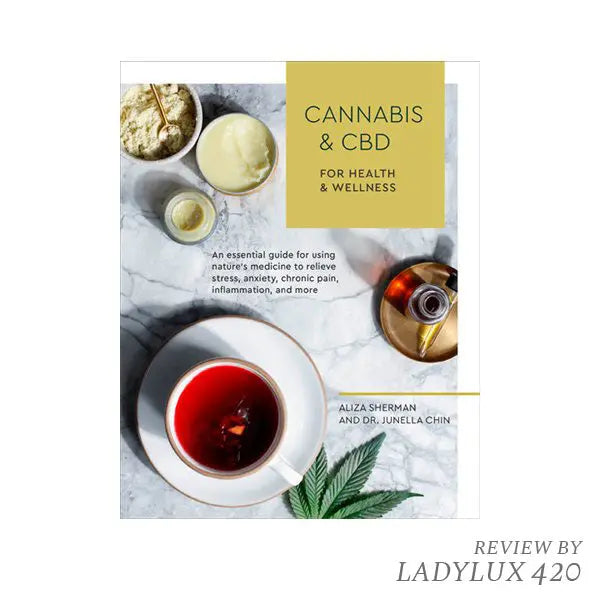The cannabis plant is considered to be quite complex with a myriad of compounds that we are still identifying! It has long been celebrated for its psychoactive compounds, particularly THC (tetrahydrocannabinol), which drives the effects that users seek for both recreational use and medicinal purposes. Basically the feeling of being "high". In Australia, at this point in time (2025), it is only legal to access cannabis via prescription with various ratios of THC on offer. Your doctor should discuss tolerance during your consultation and the impacts on your treatment.
Whether you’re a regular cannabis user enjoying the cannabis experience or a medical cannabis patient managing a medical condition like chronic pain, you’ve likely noticed that over time, the desired effects of THC can diminish. This phenomenon, known as marijuana tolerance, stems from the development of tolerance in the body’s endocannabinoid system. In this guide, we’ll explore how THC tolerance builds, its impact on tolerance levels, and when a THC tolerance break might be a good idea. We’ll also cover the best ways to take a break and why it can be a good thing for your overall health.
Understanding THC Tolerance
All mammals possess an Endocannabinoid System and produce their own internal (endogenous) cannabinoids. The reason for this system is to help keep the body in homeostasis/equalibrium. The 2 main cannabinoids that humans naturally produce are Anandamide and 2-AG and these dock into receptor sites (CB1 and CB2) to produce a specific effect.
THC interacts with cannabinoid receptors, primarily CB1 receptors in the brain, to produce its psychoactive effects—think euphoria, relaxation, or an elevated heart rate. These receptors play a crucial role in the body’s endocannabinoid system, which regulates mood, pain, and memory, among other functions. However, with frequent cannabis use, the brain adapts. Regular users—especially heavy cannabis users—may notice that they need higher doses or more mg of THC to achieve the same desired effects. This is the hallmark of high tolerance.
The development of tolerance occurs because the brain reduces the number of available cannabinoid receptors—sometimes referred to as fewer receptors—in response to consistent THC exposure. This down regulation dampens the effects of cannabis, meaning that regular consumers might find their usual amount of THC less effective over time. For recreational cannabis enthusiasts, this can dull the fun. For medical cannabis patients, it might mean less relief from symptoms, pushing them to use much THC and increasing the greater risk of side effects.
How Tolerance Builds
Several various factors contribute to marijuana tolerance. Frequent users who use cannabis daily are more likely to develop higher tolerance than occasional users. The THC concentrations in cannabis products also matter—products with higher potency accelerate tolerance buildup. For instance, a low dose of 5 mg of THC might suffice for a beginner, but a regular cannabis user might need 20 mg or more to feel the same cannabis experience. Other factors, like genetics, metabolism, and overall health, influence how quickly tolerance levels rise.
Frequent cannabis use doesn’t just affect potency needs—it can also alter brain function. Studies suggest that brain cells adapt to the constant presence of THC, reducing sensitivity to its psychoactive effects. This adaptation explains why heavy cannabis users often report needing higher tolerance to enjoy the influence of cannabis. Over time, this may lead to cannabis dependence, where the body craves THC to feel “normal,” potentially disrupting daily life.
Signs You Might Need a Break
How do you know when your THC tolerance has climbed too high? For regular users, the first clue is a diminished response to your usual dose. If you’re consuming higher doses without feeling the desired effects—whether that’s relaxation, pain relief, or euphoria—it’s a sign your cannabinoid receptors are desensitized. Other indicators include an increased heart rate or performance impairment, like slower reaction time, which can affect tasks like driving or work.
For medical cannabis patients, tolerance might mean their medical condition—say, chronic pain—is no longer well-managed, even with much THC. Recreational users might notice the side effects (e.g., dry mouth, anxiety) outweigh the benefits. If you’re a frequent user chasing the initial effects of THC with no success, it’s time to consider a cannabis tolerance break. Even a short break can reset your system, making cannabis effective again at lower doses.
The Benefits of a THC Tolerance Break
A THC tolerance break—often called a “T-break”—is a deliberate pause from marijuana use to reset your body’s endocannabinoid system. This break allows cannabinoid receptors to recover, increasing their sensitivity to THC. For regular consumers, this can mean returning to a low dose and still enjoying the full effects of cannabis. It’s a good thing for both your wallet and your body, reducing the amount of THC needed over time.
For heavy cannabis users, a break can also mitigate withdrawal symptoms that signal cannabis dependence. These might include irritability, insomnia, or appetite loss—temporary discomforts that fade as the body readjusts. A cannabis tolerance break can also improve mental health, clearing any fog from performance impairment and enhancing brain function. For medical reasons, patients might find that post-break, their medical purposes are better served with less THC, minimizing side effects like dizziness or fatigue. Please discuss any breaks with your prescribing doctor.
How Long Should a Break Last?
The duration of a THC tolerance break depends on your cannabis use habits and goals. For frequent users with high tolerance, a two-week break is often recommended by medical professionals to see noticeable changes. Heavy cannabis users might need a month or more to fully reset their tolerance levels. Even a short break of 48 hours can help regular users feel a difference, though the effects will be subtler.
The key is consistency—avoid all cannabis products during this time, as even a low dose can delay the reset. THC concentrations linger in fat cells, so the longer you’ve been a regular cannabis user, the more time your body needs to clear it out. Patience pays off: after a break, lower doses can deliver the desired effects without pushing you back into higher tolerance.
Tips for a Successful Tolerance Break
Taking a cannabis tolerance break can be challenging, especially for frequent cannabis use veterans. Here are the best ways to make it work:
1 Set a Goal: Decide why you’re pausing—whether for recreational use enjoyment or medical purposes—and stick to it.
2 Start Small: If a long break feels daunting, try a short break first to build confidence.
3 Stay Busy: Distract yourself with hobbies or exercise to ease withdrawal symptoms and improve mental health.
4 Hydrate and Eat Well: Support your overall health to help your body recover faster.
5 Seek Support: Tell friends or medical professionals about your plan for accountability.
For medical cannabis patients, it’s a good idea to consult a doctor before stopping, especially if cannabis manages a medical condition. They can suggest alternatives to maintain relief during the break.
When to Resume Cannabis Use
After your THC tolerance break, ease back in with lower doses. Start with half your usual mg of THC—say, 5 mg instead of 10—and gauge the effects of THC. For recreational cannabis, this gradual return enhances the cannabis experience without skyrocketing your tolerance levels. Medical cannabis patients should monitor how well their medical condition responds, adjusting as needed under professional medical advice.
The goal isn’t to quit forever (unless that’s your aim) but to reset your relationship with cannabis. Post-break, you’ll likely find that much THC isn’t necessary, reducing the greater risk of side effects and cannabis dependence.
Special Considerations
Not everyone experiences tolerance the same way. Chronic pain sufferers or those using cannabis for medical reasons might fear losing symptom control during a break. In these cases, a phased approach—gradually reducing mg of THC before stopping—can balance tolerance management with relief. Medical disclaimer: Always consult a healthcare provider before altering your use of cannabis, as individual needs vary.
For recreational users, tolerance breaks can prevent cannabis from becoming a crutch in daily life. If you’re at higher tolerance and notice reaction time slowing or mental health dipping, it’s a sign to reassess. The influence of cannabis should enhance, not hinder, your routine. We are not here to judge though and your individual journey is important.
Conclusion
THC tolerance is a natural response to frequent cannabis use, driven by changes in cannabinoid receptors and the body’s endocannabinoid system. Whether you’re a regular cannabis user chasing the desired effects or a medical cannabis patient managing chronic pain, a cannabis tolerance break can restore sensitivity to THC, making lower doses effective again. By understanding the development of tolerance and recognizing when higher doses signal a need for pause, you can optimize your cannabis experience.
Taking a break isn’t about giving up cannabis—it’s about enhancing its benefits. With the best ways to navigate a THC tolerance break, you can avoid withdrawal symptoms, support brain function, and return to use cannabis with renewed appreciation. Whether for recreational use or medicinal purposes, a little time off can go a long way toward keeping cannabis a positive part of your life.







